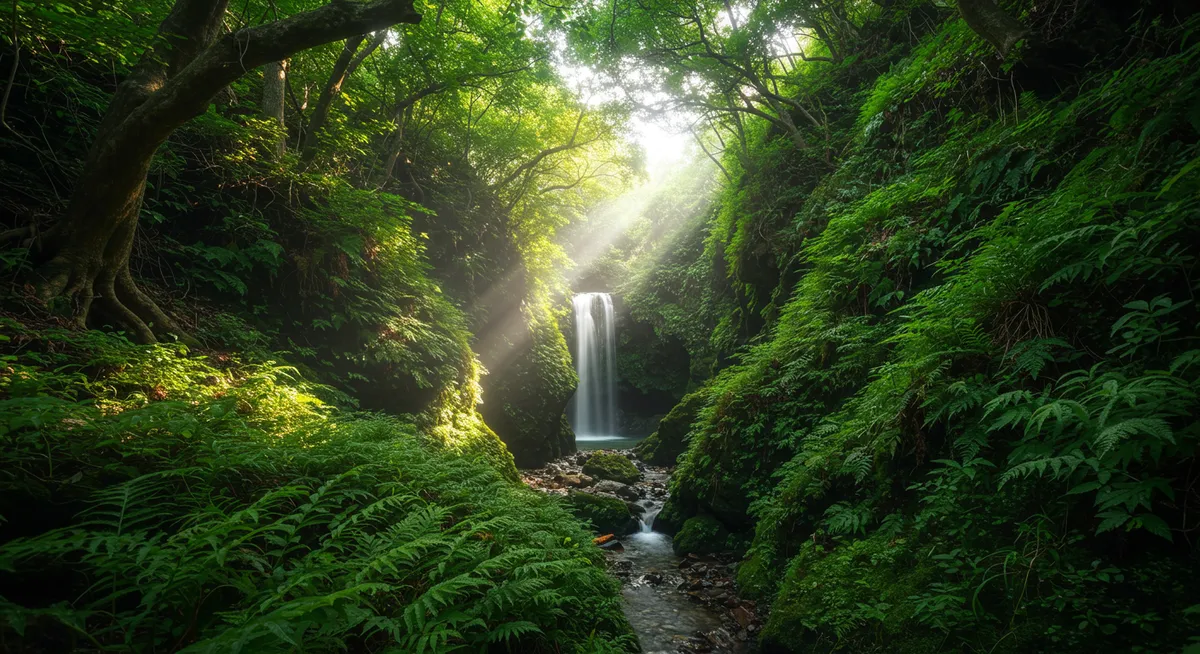
Hidden Nature Spots Seogwipo: Your Guide to Jeju's Secret Gems
Table of Contents
Want to find the best nature experiences for this destination? Chat with our nature tourism specialist!
Get Nature TipsCategory: hidden-nature-spots-seogwipo
Unveiling Seogwipo's Secret Natural Wonders
Having explored Seogwipo's diverse landscapes firsthand, I can confidently say that beyond its well-known attractions lie truly enchanting hidden nature spots. This guide will help you uncover the serene beauty and untouched wilderness that makes this part of Jeju Island so special.
Donnaeko Valley's Serene Retreat
For those seeking respite from crowded tourist areas, Donnaeko Valley offers a tranquil escape among the hidden nature spots Seogwipo boasts. This refreshing valley, less frequented by mainstream tours, features crystal-clear streams and lush forest paths perfect for a leisurely stroll. My personal tip: pack a light picnic to enjoy by the water's edge, as it's an ideal spot for quiet contemplation. The untouched beauty here makes it a prime example of Seogwipo's natural attractions. Furthermore, the cool spring water is invigorating, especially during warmer months. Exploring this peaceful gorge provides a unique insight into Jeju's pristine environment, a stark contrast to the city's hustle. You can find more beautiful cascades within our Seogwipo waterfalls guide.
Hwangwooji Coast's Volcanic Beauty
Discover the dramatic coastal formations at Hwangwooji Coast, a true gem among the hidden nature spots Seogwipo presents. This area is famous for its unique tide pools and natural rock bridges, sculpted by centuries of volcanic activity and ocean waves. It’s an incredible place for photography, especially during low tide when the pools are exposed. From my experience, the rugged coastline offers a wild, untamed beauty that feels distinctly Jeju. In fact, many visitors overlook this raw beauty in favor of more publicized sites. This makes Hwangwooji an excellent choice for adventurers and photographers. Planning a visit to this coastal marvel enhances any exploration of Seogwipo's captivating nature attractions.
Gunsan Oreum: Panoramic Seogwipo Views
Ascending Gunsan Oreum provides some of the most breathtaking, yet often overlooked, panoramic views, making it a stellar addition to hidden nature spots Seogwipo has to offer. This relatively easy hike leads to a summit where you can gaze upon Hallasan, the coastline, and the surrounding Jeju landscape. As a seasoned traveler, I find that these lesser-known oreums provide a more intimate connection with the island's volcanic heritage than the larger, more crowded peaks. Therefore, it's a perfect destination for those seeking tranquility and spectacular vistas without the crowds. Exploring this trail is a prime example of the rewarding experiences available on Seogwipo's best hiking trails.
Exploring Seogwipo's Lesser-Known Olle Trails
While many visitors flock to the popular sections, some of the most rewarding hidden nature spots Seogwipo offers are found on its less-traveled Olle Trail segments. These trails often wind through secluded forests, past small villages, and along quiet coastlines, revealing the authentic charm of Jeju. My personal preference leans towards sections that cut through tangerine farms, offering fragrant walks and unique photo opportunities. You'll encounter fewer people, allowing for a more immersive experience with the island's serene environment. Consequently, these pathways provide a deeper appreciation for the local culture and natural beauty. Delve into the details of specific routes in our guide to Jeju Olle Trail Seogwipo sections.
Frequently Asked Questions
Are these hidden spots accessible by public transport?
What's the best time of year to visit Seogwipo's nature spots?
Seogwipo is a treasure trove of natural beauty, and venturing beyond the usual tourist haunts reveals a quieter, more profound experience. These hidden nature spots in Seogwipo offer a unique glimpse into Jeju's pristine landscapes, from tranquil valleys to dramatic coastlines and panoramic oreums. Embracing these lesser-known destinations allows for a more authentic and personal connection with the island. Don't just visit Seogwipo; truly discover its secrets. Plan your adventure to uncover these secluded wonders and immerse yourself in the untouched serenity of Jeju Island. For more travel insights, remember to explore all the resources at Tourist Nature.